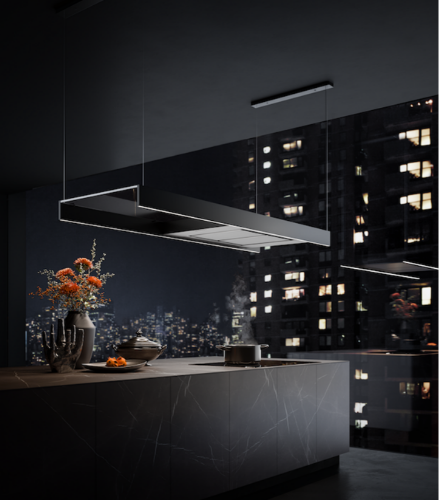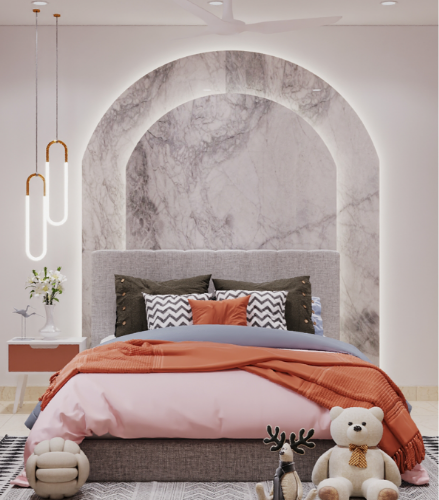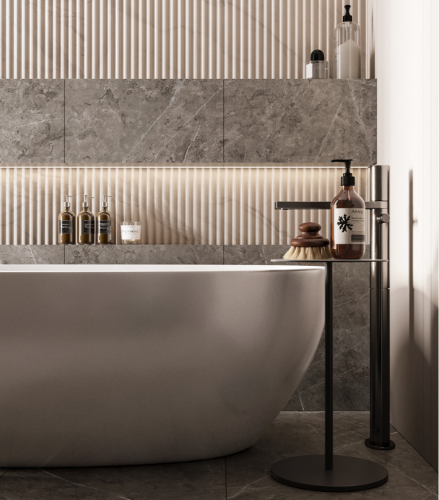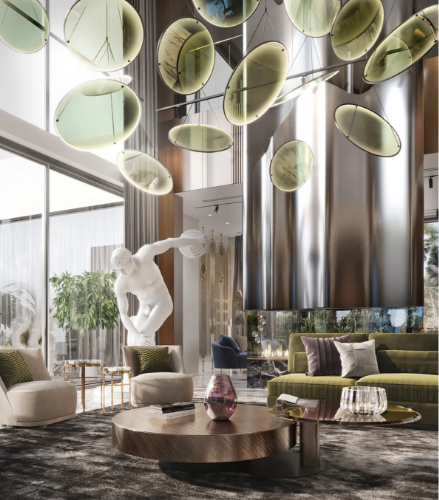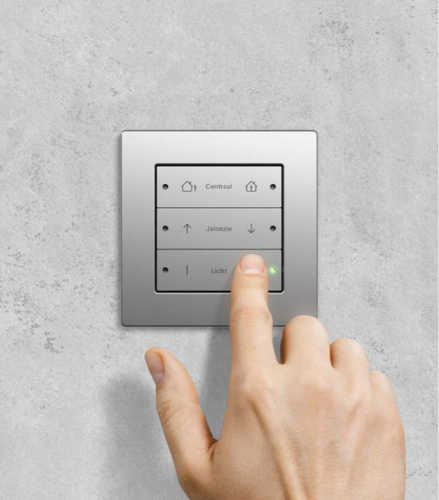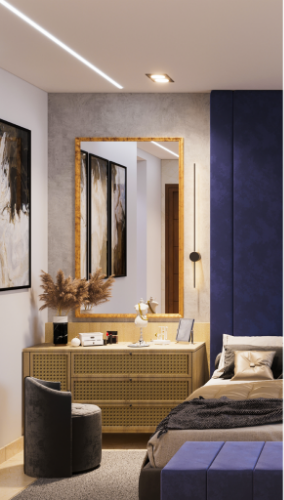Blossoming and glistening, the world of Mediterranean interior design embraces warm colours, rustic details and a relaxed coastal vibe to create a stunning and inviting living space. Inspired by the beauty of the Mediterranean region, the design style embodies elements of the sea, sun and local architecture to manifest a space that feels like an escape destination. Whether you live by the beach or in the city, you can introduce the essence of the Mediterranean into your abode with the right design choices. In this blog, we will take you on a journey of the Mediterranean and explore a plethora of interior design elements that will help you adopt this eyeful interior design style into your home.
What is Mediterranean Interior Design?
You might have gotten an obscure idea about what Mediterranean interior design is all about, but to expand on that further, it’s an interior design style that draws inspiration from the vast and vivid coastal regions of the Mediterranean Sea. Homes bestowed with the said design style stand out because of their warm colours, usage of natural materials and relaxed coastal vibe.
As stated before, the design is a concert of elements mimicking the sea, sun and local architecture with a focus on berthing a comfortable and alluring space. Some of the key attributes of Mediterranean interior design include the use of terracotta tiles, natural stones, exposed brick or stucco walls, arched doorways and windows, warm-toned wood furnishings, wrought iron accents and textiles in shades of blue and green to evoke the colours of the sea. All these then come together to shape a space that feels cosy, warm and reminiscent of a Mediterranean Villa.
Also Read: What makes (Boho) Bohemian Interior Design so Special?
History of Mediterranean Interior Design
Today, with the slightest mention of Mediterranean interior design, people generally think about the aesthetics of Southern European countries such as Greece, Italy and Spain. But it’s vital to remember there are 21 countries surrounding the Mediterranean Sea, which means true Mediterranean design may as well been originated from Israel, Morocco and beyond. While it’s highly possible these countries draw inspiration from each other because of their proximity to each other’s cultures, it’s equally possible that their own distinct cultures and design traditions created several different evolutionary changes to the design.

For instance, in the early 20th century, Mediterranean interior design experienced a resurgence of popularity in the United States, driven in part by the Spanish Colonial Revival style, which drew heavily from the architecture and design elements of Spain and the Mediterranean. But the reason, this revival became so popular is because of both the growth of California and the increase in popularity of coastal living, as well by the Spanish Colonial revival architecture that was widely used in the construction of homes, hotels and other buildings. Today, the popularity of Mediterranean interior design continues to grow among people because of its versatile design aesthetics and rich history.
Also Read: What Makes Scandinavian Interior Design So Special?
Characteristics of Mediterranean Interior Design
While there are a varying number of characteristics in the Mediterranean interior design, which may also differ within the various regions of the Mediterranean, we have listed the must-haves that are believed to be the core of the design.
1. Warm Colours

Colours are at the heart of any interior design, but when it comes to this specific interior design style, it plays an even bigger role than the other aspects of the design style. At the heart of it, the colours used in the Mediterranean interior design are warm, which reflects the sunny, warm climate of the Mediterranean region. From a psychological standpoint, these colours are intended to evoke a feeling of comfort and relaxation, which you might feel sunbathing on the beaches of the Mediterranean Sea. The colours often include various shades of terracotta, yellow, orange and warm blue and green.
2. Natural Elements
For as long as we can remember, people have tried to bring nature into their homes. Perhaps we as a species never really gave up our lives in the wilderness. But more importantly, the use of natural elements such as clay, stone and wood in Mediterranean interior design is to portray the beauty of the Mediterranean region inside the home.

3. Arched doorways and windows
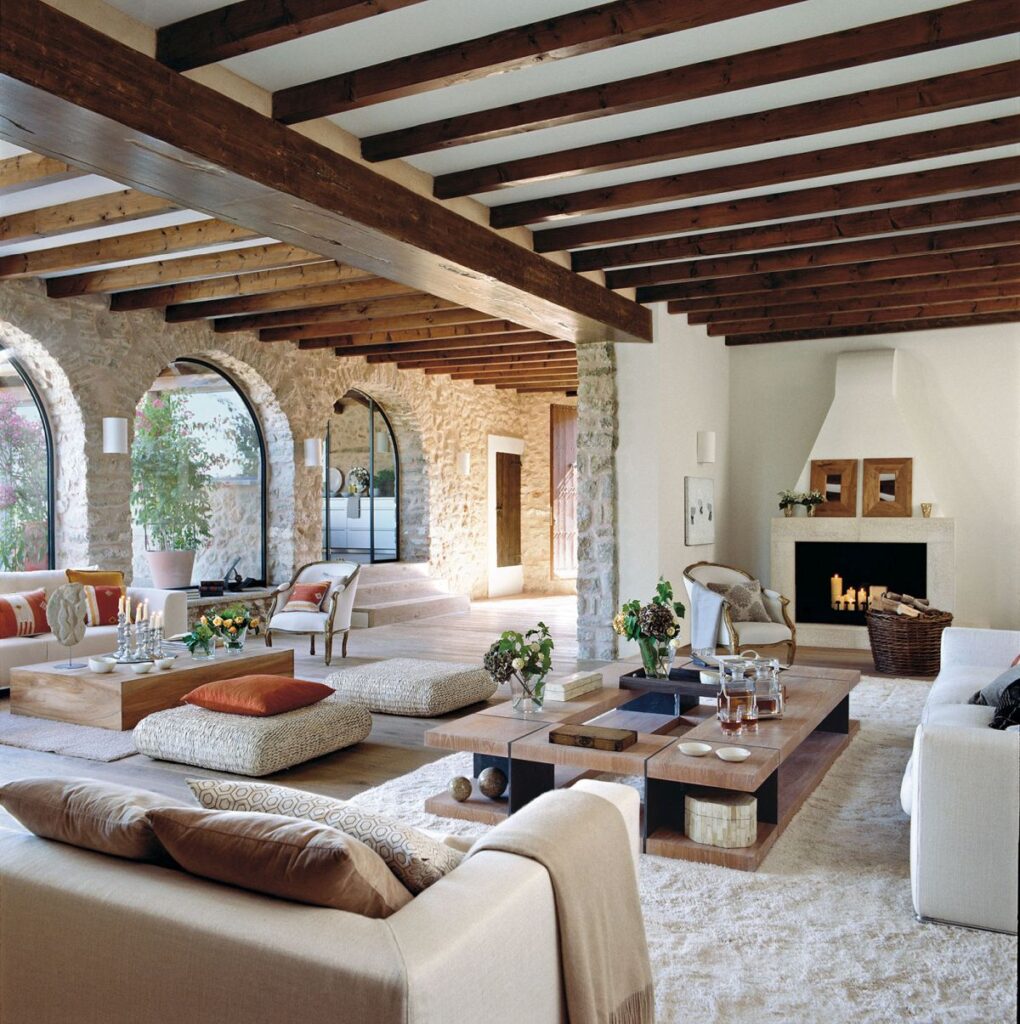
Arched doorways and windows are a pedestrian element of Mediterranean interior design. Apart from adding an elegant and classical touch to any space, it can create an illusion of space in a room. Also, these arches tend to become the focal point, drawing your gaze and creating a sense of grandeur. Finally, since the Mediterranean interior design is derived from ancient Mediterranean architecture, it adds a sense of history and charm to the room.
4. Exposed brick or stucco walls
It’s probably the easiest way to add visual interest and character to a space, in addition to delivering a unique textured appearance. These walls are often found in Mediterranean interior design because of their ability to create a warm and cosy appearance. And since these walls are made of natural materials like brick and stucco, they can easily establish a connection with the earth which is both visually and emotionally pleasing.

5. Textiles

Mediterranean interior design embraces the use of colourful and patterned textiles in the home interiors, it can tie everything together and create a cohesive look. Using the right textiles can literally do wonders for your home. For example, textiles such as cushions, rugs and curtains make a space feel cosier. Moreover, textiles can be layered to add a sense of depth to the space and create interest.
6. Rustic Furnishings
For a true Mediterranean interior design, the inclusion of rustic furniture is a must, for without it everything looks out of place. This furniture focuses on natural materials and features a simple, functional design. Some great options of the design style are distressed wood tables and cabinets, woven baskets and rustic pottery, all these add to the relaxed and rustic vibe of the room.

Also Read: What makes Japandi interior design so special?
More often than not people run circles around various design stories to settle on the best one for their home, so hopefully, this blog helped you understand what Mediterranean interior design is, where it came from and what things should be present in the design for it to be truly a Mediterranean interior design.

